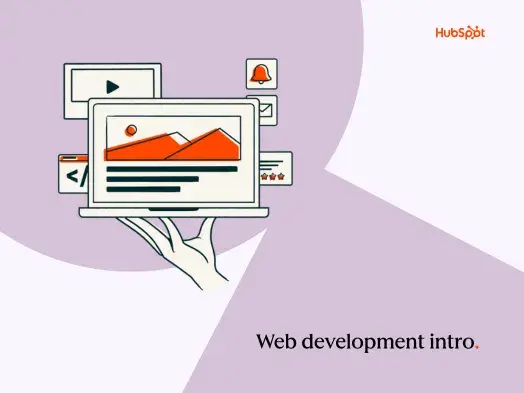With that in mind, here are 15 backend projects to show potential employers that you can apply your developer knowledge to the real world.
In this guide, we'll cover:
- What is a backend project?
- Why Your Portfolio Needs Backend Projects
- 15 Backend Projects for Developer Portfolios
Let's get started.
While front-end developers build the look and feel of a website, backend developers work behind the curtain. They build features like data storage, security, and other functions invisible to the average user.
The backend developer works on server-side software. Therefore, they ensure that the website or application works correctly. Their work requires a knowledge of the following:
- Coding using a programming language like Python, Java, Ruby, and PHP.
- Frameworks like Laravel, Ruby on Rails, Django, and Node.js.
- Data structures and algorithms.
- HTTP and the basics of the web.
- SQL and other database fundamentals.
- Web servers like Apache, NGINX, Lighttpd.
- Web deployment and security.
A successful backend project for a developer’s portfolio must show off at least one or two of these skills.
You may know how to build the back end of applications. But if you’ve only worked on front-end projects in prior roles, you’ll need to prove your ability to transition. Backend projects can help you demonstrate your skills and make the switch.
Why Your Portfolio Needs Backend Projects
If you know all about databases, coding, and the other skills listed in the section above, you might think you don’t need projects in your portfolio. However, this mindset can lead to rejected applications and frustration.
Here are some reasons why your portfolio needs backend projects.
1. Backend projects prove your technical ability.
Suppose you are a self-taught developer who went through several tutorials and built a few projects based on these sessions. In that case, you might be even more frustrated when you keep getting rejections from employers despite including these projects in your resume.
While useful, these tutorial projects are not likely to impress anybody looking to hire a backend developer. Why not? Because they only show two things:
- That you are just a learner. The ideas you likely worked on in your tutorials already had a solution. Thus, you were probably only following along with the tutor. While it’s great in a learning environment, this doesn’t transfer to a work environment where solutions aren’t available.
- The code you created for the tutorial’s project might be copied or not — recruiters don’t know the difference.
An independent, backend project can solve these challenges. These original works show that you have both the coding and problem-solving skills to excel in a backend developer role.
2. You can advertise your skills.
Resumes are usually enough to start applying for jobs. However, resumes only show what you claim you can do.
A portfolio linked to your social media handles on Twitter, Facebook, or LinkedIn will let your contacts and potential recruiters see the full scope of your ability. There are many examples of people who got contacted by top companies based on their portfolio's strength.
Now that you know the importance of a portfolio, let’s dive into how you can demonstrate your skills.
15 Backend Projects for Developer Portfolios
Here is a list of backend projects you can stock your developer portfolio with.
1. A User Authentication System

In this project, you’ll create a signup or login system for users on a website. The login/signup project is important because many organizations’ websites have an authentication layer embedded in them.
For this project, you’ll need knowledge of programming languages like Python, PHP, or NodeJS.
What we love: This project challenges your fundamentals. You’ll need to strengthen your “muscles” and learn about cookies, working with databases, using SQL, MongoDB, and authorization.
2. Build a Landing Page

This next project will require you to build a landing page using HTML, CSS, and Javascript. There are thousands of excellent landing page examples on the internet, so you could pick one and try to recreate it or even create something better.
For this project, you’ll need to know HTML, CSS, and Javascript.
What we love: This project is more of a front-end project. However, the knowledge you’ll gain is vital to backend development. As a backend developer, you need to know about web servers, HTTP, and how web pages communicate with the server. Completing this project successfully will show recruiters that you understand the basics.
3. Build Your Own Web Server
Understanding web servers and internet access are essential to your backend developer career. So this project to build a web server and make it internet accessible is exactly right for you.
You’ll need to learn about REST, GraphQL, and WebSockets for this project. Each of these is important and growing in popularity in web development.
What we love: This project is relatively simple; however, it gives you loads of options for customization. Therefore, you can show off your problem-solving skills, which is something that all backend developers must develop.
4. Build a Finance Application

This isn’t as complicated as it sounds. In this project, you’ll build an application where you can input and track your expenses and transactions.
For this project, you’ll need to know how to use APIs.
What we love: You must know how to use APIs and Github. This project will force you to sharpen your skills and, at the very least, make recruiters curious about what else you can do.
5. Create a Text Analyzer
To build a text analyzer, you’ll need to use Python. As a backend developer, this is one of the foundational skills you will need. This project helps you put your knowledge into practice.
What we love: This project involves using a command line interface or CLI. You cannot avoid using CLI as a backend developer, so it’s helpful to create projects that exercise this skill.
6. Build a To-Do App

Building a to-do app as a project will test your ability as a developer, especially regarding your Django and PostgreSQL skills.
What we love: Databases are crucial to backend developers because they store information. This project improves your ability to use and manipulate databases.
7. Build a CLI App
[https://www.youtube.com/watch?v=vm9tOamPkeQ]
We’ve touched on the importance of a CLI or command line interface to a backend developer, and this project takes it even further. Here, you’ll build an app that mimics your favorite command terminals.
What we love: This project is simple and wouldn’t take too long. The project aims to familiarize you with CLI technology and better understand its concepts.
8. Build an API
Build an API? Isn’t that like advanced stuff? Not really, because here you’ll be building a basic API.
In the first part of the project, you’ll build an API to handle basic Create, Read, Update, and Destroy (CRUD) operations and Listing.
The second part of this project is to update the code so that it will interact with a proper database.
What we love: We love this project because it gives you the first interaction with SQL concepts.
9. Build a Proxy Server
A proxy server requests data from a 3rd party API. For this project, you’ll build a proxy server that requests data from an external API and give the user the information.
You can use a program of your choice, whether Python or PHP, to write the code and then use Postman for API testing.
What we love: You’ll build how to work with Fetch API in NodeJS, learn how to fetch data from a 3rd part API, and of course, learn how to work with databases.
10. Create a Library Book Collection Application Project

You can create an application that lets the user do the following:
- Create an account.
- CRUD operations.
- Show if a book is available.
For API testing, you’ll need a programming language, Postman, and a templating language like EJS to implement a simple frontend.
What we love: This project will test and improve your ability to create data models, limit user access to data, work with databases, manipulate data, and more.
11. Build a Web Crawler
Are you interested in gathering data about your favorite movie or a topic on social media? Then this project will be perfect for you. Here you’ll build an app that crawls the internet and gathers data.
What we love: Building this app will teach you to work with service workers and databases, secure databases, and work with CORS.
12. Build an E-commerce Application

This is one of the more complex projects and might take some time to complete. Here you’ll learn about the backend of e-commerce applications. You’ll build an application that offers social integration, allows CRUD operations by admin users, implements a product cart, and includes dashboards.
What we like: It’s essential to challenge yourself and build something relatively complex. Having this project in your developer portfolio will impress potential employers.
13. Create a Restaurant App

The next project is building a restaurant app. The app should allow users to create an account, order food, and make reservations.
What we like: You’ll work with databases in this project and learn more about CRUD operations.
14. Deploy an Image Management Application

You need to show recruiters that you can code and deploy. And this project will help you display these skills. Here you’ll build an deploy an image management app.
What we love: Some of the benefits of this project include teaching you how to create a database and table, endpoints for storage and retrieval of data (in this case, images), uploading the code to Github, and deploying the app on Heroku. You can find a tutorial for the project here.
15. Build a Search Engine for StackOverflow
A final project to help you build your developer portfolio is developing a search engine for StackOverflow. This search engine should be geared towards having similar or even more features than the main web app.
What we love: This type of project demonstrates your ability to work with APIs and implement a search engine feature.
Get your hands dirty with these backend projects.
These 15 backend projects can improve your skills while demonstrating your abilities to employers. They show your familiarity with backend development's crucial concepts and tools.
So get your hands dirty as you continue to build your skill set.
Website Development






![How to make a website with user accounts and profiles [with WordPress, Wix, and more]](https://53.fs1.hubspotusercontent-na1.net/hubfs/53/%5BUse%20(3).webp)
![How to build a Google Site that looks good and drives business [templates & examples]](https://53.fs1.hubspotusercontent-na1.net/hubfs/53/Website%20Redesign%20Terms.png)





